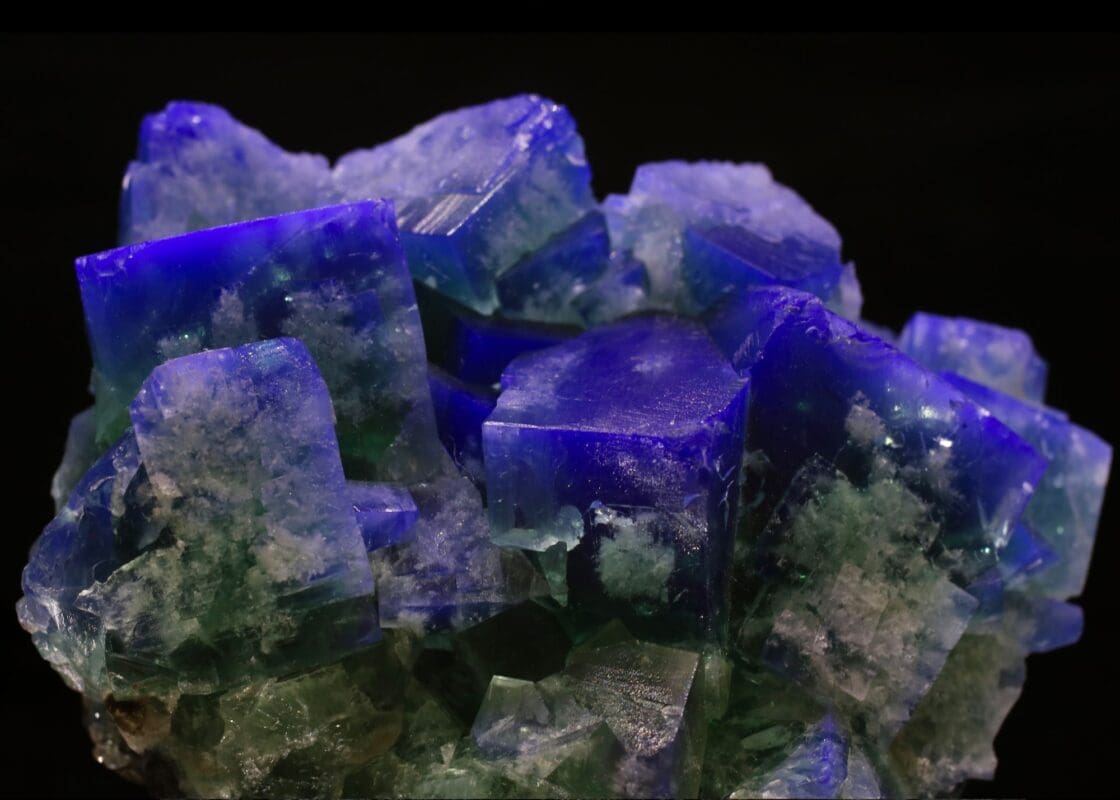Fluorite: A Spectrum of Colors in the Mineral World
Introduction
Did you know that Fluorite, also known as the ‘most colorful mineral in the world’, can exhibit a remarkable range of colors within a single specimen? This unique characteristic, combined with its striking crystal forms, makes Fluorite a favorite among collectors and gem enthusiasts. In this detailed look into Fluorite, we will uncover the secrets behind its diverse color palette and delve into its rich history and geological formation.
Historical Significance of Fluorite
The story of Fluorite dates back to ancient times when it was used for decorative and practical purposes. Known to the Romans as ‘fluorspar’, it was used in various forms, from vessels to intricate carvings. In different cultures, Fluorite was often associated with creativity and artistic expression due to its vibrant colors and was thought to have metaphysical properties that inspired and energized the mind.
Geological Formation and Properties of Fluorite
Fluorite is a halide mineral composed of calcium fluoride. It typically forms in hydrothermal veins, often alongside minerals like Quartz and Calcite. What sets Fluorite apart is its ability to display a wide range of colors – from purples and greens to blues and yellows – often within a single crystal. This color variety is primarily due to trace impurities and radiation exposure. Fluorite is also known for its perfect octahedral cleavage and glassy luster.
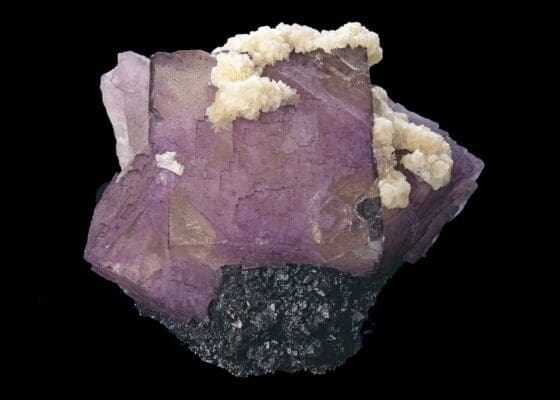
Rarity, Collector’s Perspective, and Identifying Authentic Fluorite
Rarity and Value in the Gemstone Market: Fluorite’s appeal in the gemstone market is largely due to its vibrant color spectrum and the beauty of its crystal formations. While Fluorite is not rare in general, certain colors and crystal structures can be quite rare and sought after by collectors. For example, blue and green varieties are relatively common, but pink and especially black Fluorite are much rarer and more valuable.
Identifying Genuine Fluorite: Genuine Fluorite can be identified by its unique physical properties. It typically exhibits a glass-like luster and a characteristic fluorescence under ultraviolet light. When inspecting for authenticity, one should look for Fluorite’s typical cubic crystal form and its perfect octahedral cleavage. The stone should also feel relatively soft, as Fluorite ranks only at 4 on the Mohs scale of mineral hardness.
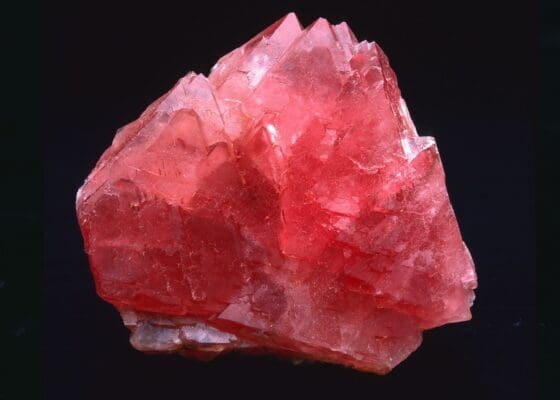
Characteristics of High-Quality Fluorite Specimens: High-quality Fluorite is characterized by its vibrant color saturation, translucency, and minimal inclusions. Specimens with unique or particularly aesthetic crystal structures, such as those with complex intergrowths or unusual color zoning, are highly prized.
Market Value of Fluorite
Current Market Value: The market value of Fluorite varies based on several factors. High-quality specimens with rare colors and exceptional clarity are more valuable. Larger pieces with well-formed crystals also tend to fetch higher prices.
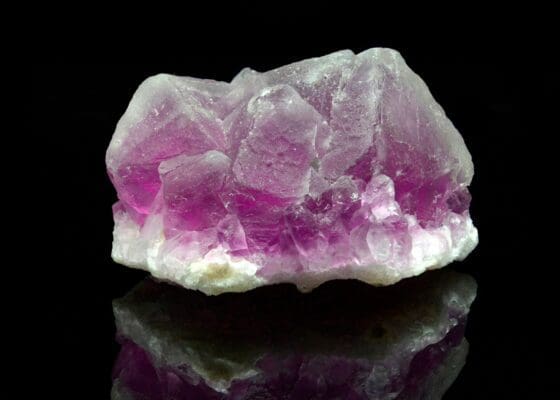
Factors Influencing Price: The most significant factors influencing Fluorite’s price include color rarity (with certain colors being more sought after), clarity (the clearer, the better), and overall specimen quality, including the aesthetic appeal of its crystal form. The presence of unique or particularly beautiful color zoning can also increase a specimen’s value.
Major Locations and Mining of Fluorite
Key Mining Locations: Fluorite is mined in various parts of the world with notable deposits in China, Mexico, South Africa, Spain, and the United States. Each of these regions produces Fluorite with distinct characteristics.
Distribution and Rarity of Different Colors: The distribution and rarity of different Fluorite colors vary by location. For instance, China is known for its green and purple Fluorite, while Mexico is famous for its vibrant blue and green varieties. The rarity of certain colors like pink or black Fluorite, primarily due to the specific geological conditions required for their formation, makes them more valuable and sought after by collectors.
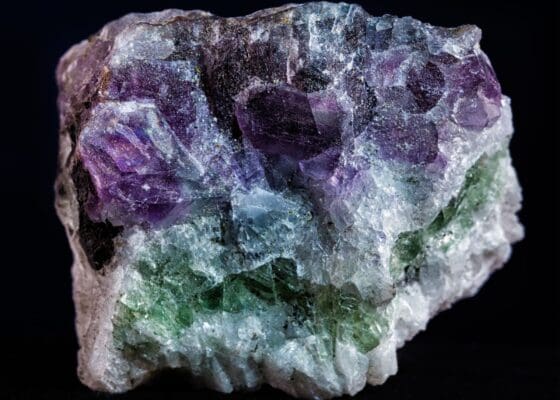
Uses and Applications of Fluorite
Fluorite in Jewelry and Decorative Arts: Fluorite, with its striking color variations and crystal clarity, is a popular choice in the world of jewelry and decorative arts. It is often used in making pendants, earrings, and rings, though it requires careful handling due to its relative softness (4 on the Mohs scale). Fluorite’s unique hues make it an attractive stone for statement jewelry pieces. In decorative arts, it is used for crafting sculptures, ornamental objects, and inlaid designs, celebrated for the vibrant and diverse colors it brings to these creations.
Unique Applications and Care Instructions: Beyond aesthetics, Fluorite finds applications in various industrial processes, including in the manufacture of high-grade optical lenses due to its low refractive index and high dispersion rate. It’s also used in the metallurgical, chemical, and ceramic industries. When caring for Fluorite, avoid harsh chemicals or ultrasonic cleaners. Gentle cleaning with a soft cloth and mild soap is recommended. Due to its softness, it should be stored separately to avoid scratches.
Metaphysical Properties, Beliefs, and Symbolism
Metaphysical Beliefs: Fluorite is widely recognized in metaphysical circles for its ability to enhance mental clarity, improve decision-making, and boost concentration. It is believed to absorb and neutralize negative energy and stress, making it a popular choice for those seeking balance in their lives.

Fluorite’s Influence on Mental Clarity and Creativity: Many believe that Fluorite stimulates the mind, fostering creativity, and enhancing problem-solving abilities. It is thought to aid in organizing and processing information, making it beneficial for learning and brain functions.
Chakra Associations and Symbolism: Fluorite is associated with the Third Eye and Heart Chakras, believed to enhance intuition and clarity of heart and mind. In various cultures, it symbolizes a harmonious connection between the heart and mind. The folklore surrounding Fluorite often emphasizes its role in bringing order to chaos, both in the physical and spiritual realms.
Fluorite in Jewelry
Incorporation into Modern Jewelry Designs: In contemporary jewelry design, Fluorite is valued for its versatility and the splash of color it adds to both casual and formal pieces. Designers often utilize its vibrant hues in various cuts and settings, creating pieces that are both eye-catching and unique.
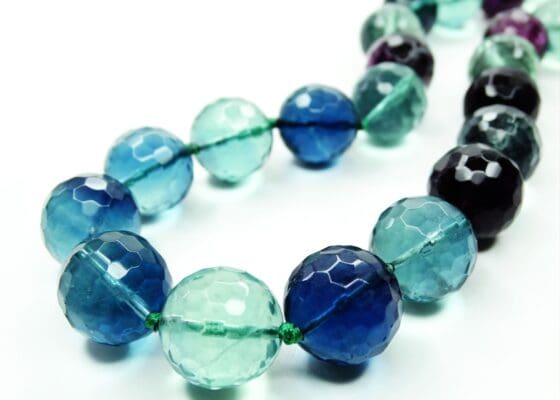
Examples of Popular Jewelry Styles: Popular styles featuring Fluorite include faceted beads in necklaces and bracelets, which highlight its color variety. Cabochon settings are also common, which protect the stone and showcase its color without the need for faceting. Statement rings and drop earrings featuring large Fluorite pieces are particularly favored for their visual impact.
Fun Facts and Trivia about Fluorite
- Name Origin: Fluorite’s name comes from the Latin word “fluere,” meaning “to flow,” due to its use as a flux in smelting.
- Fluorescence Discovery: The phenomenon of fluorescence was first described in Fluorite – it can glow under ultraviolet light.
- Color Variations: Fluorite can exhibit almost every color in the spectrum, including some specimens that are color-changing or multicolored.
- Cleavage: Fluorite is famous for its perfect octahedral cleavage, which means it can be split into octahedral crystals.
- Record-Breaking Crystals: Some of the largest Fluorite crystals ever found have measured up to 2.1 meters across.
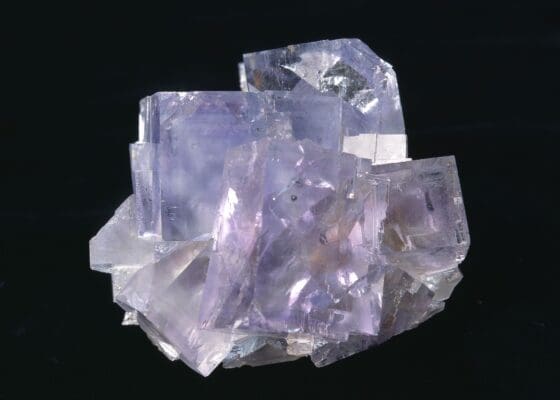
Expanded Answers to Top Questions from Google’s ‘People Also Ask’
- What is Fluorite crystal good for?
Fluorite is highly regarded for its remarkable ability to enhance mental clarity and focus. It is believed to aid in organizing and processing information, making it an ideal stone for students and professionals alike. In meditation practices, Fluorite is used to foster deep concentration and to help in navigating complex emotional landscapes. It’s also thought to be beneficial in balancing energies and stabilizing the aura, making it a popular choice in energy healing and spiritual practices. - What is special about Fluorite?
The unique aspect of Fluorite lies in its dazzling array of colors and the phenomenon of fluorescence. It can display a multitude of hues, from deep purples to vibrant greens, often within the same specimen. Its ability to fluoresce under ultraviolet light adds to its mystique and allure, creating a captivating visual experience. Moreover, Fluorite’s perfect octahedral cleavage and glassy luster distinguish it from other minerals, making it a fascinating subject of study for mineralogists and a beloved gemstone for collectors. - Is Fluorite toxic to humans?
Fluorite in its natural state is not toxic to humans. However, it’s important to handle any mineral with care. When Fluorite is ground into a powder or if it breaks, it can produce dust that should not be inhaled. As a precautionary measure, especially when handling rough or powdered Fluorite, it is advisable to wash hands thoroughly after contact to avoid potential ingestion of any small particles. - Where is Fluorite found in nature?
Fluorite is a globally distributed mineral, with significant deposits found in various countries including China, Mexico, South Africa, Spain, and the United States. It forms in a variety of geological environments, most commonly in hydrothermal veins associated with metallic minerals. Its presence is often indicative of a rich geological history, making it a key mineral for understanding Earth’s geologic processes. - What does raw Fluorite look like?
In its raw form, Fluorite typically appears as well-formed cubic crystals, sometimes interpenetrating to create complex shapes. Its glassy luster and wide range of colors, from deep purples and blues to greens and yellows, make it visually striking. Fluorite can also be found in massive forms without distinct crystal shapes, displaying bands or zones of different colors. - Does Fluorite glow in the dark?
While Fluorite is known for its fluorescence under ultraviolet light, it does not exhibit phosphorescence, or glowing in the dark, as some other minerals do. The fluorescence is due to certain impurities in the mineral that react to ultraviolet light, creating a glow that can range from blue to green, red, or other colors depending on the specific impurities present. - Is Fluorite OK in the sun?
Prolonged exposure to sunlight can cause the colors of some Fluorite specimens to fade. This is particularly true for deeply colored varieties. To preserve the vibrant hues of Fluorite, it is recommended to store it away from direct sunlight or intense light sources. - Does Fluorite float or sink?
Fluorite is denser than water and will therefore sink when placed in water. Its specific gravity, which is higher than that of water, ensures that it submerges completely, distinguishing it from some other minerals that may have lower densities. - What happens when you heat Fluorite?
Heating Fluorite can cause it to fluoresce or glow, and in some cases, it may change color or become colorless. Fluorite’s thermal sensitivity means it can crack or fracture when exposed to high heat or sudden temperature changes, a phenomenon known as thermal shock. - What happens when Fluorite touches water?
Fluorite is generally stable in water, but it should not be left in water for extended periods, especially hot water, as this can affect its luster and overall appearance. Prolonged exposure to water can also potentially lead to surface damage or the leaching of certain elements from the crystal. - What is the rarest color of Fluorite?
Among the spectrum of colors that Fluorite can exhibit, the pink and black varieties are considered the rarest. These colors are less commonly found in nature and are highly sought after by collectors. Deep purple and blue-green Fluorite are also relatively rare and prized for their beauty. - Where should I put Fluorite in my room?
Fluorite is best placed in areas where concentration and mental clarity are desired. Common spaces include study rooms, offices, or areas designated for meditation and relaxation. Its calming energy is believed to reduce distractions and enhance focus, making it ideal for places where learning or creative work takes place. - Which crystals cannot be kept together?
It’s advisable not to store softer crystals like Fluorite with harder ones like Quartz or Diamonds, as they can scratch or damage Fluorite’s surface. Generally, crystals should be stored with those of similar hardness to prevent scratches and maintain their integrity. - What pairs well with Fluorite?
Fluorite pairs well with other stones that promote mental clarity, stability, and creativity, such as Amethyst, which enhances intuition, and Tiger’s Eye, known for its grounding properties. Pairing Fluorite with these stones can amplify its benefits, especially in settings focused on mental and spiritual well-being. - What chakra is Fluorite?
Fluorite is associated primarily with the Third Eye Chakra, which relates to intuition, insight, and mental clarity. It’s also connected to the Heart Chakra, emphasizing its ability to harmonize heart and mind. This association makes Fluorite a versatile stone in chakra balancing and energy work.
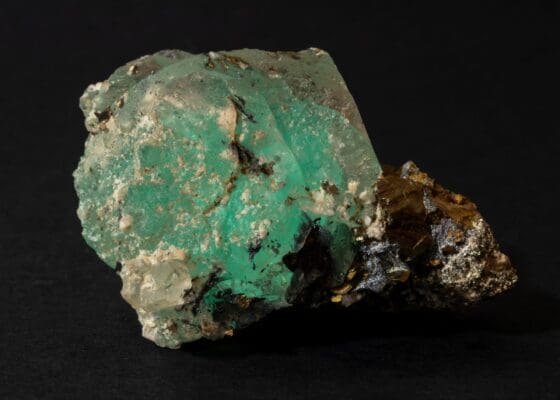
Fluorite Quiz for Collectors and Enthusiasts
Test Your Knowledge of Fluorite!
- What is the typical crystal shape of Fluorite?
A) Hexagonal
B) Cubic
C) Spherical - Fluorite is primarily composed of which two elements?
A) Silicon and Oxygen
B) Calcium and Fluorine
C) Aluminum and Silicon - Which property causes Fluorite to glow under ultraviolet light?
A) Iridescence
B) Fluorescence
C) Piezoelectricity - What is the hardness of Fluorite on the Mohs scale?
A) 4
B) 6
C) 8 - Metaphysically, Fluorite is associated with which chakra?
A) Root Chakra
B) Heart Chakra
C) Third Eye Chakra
Discover below how well you know Fluorite! This quiz is designed for enthusiasts and collectors interested in the geological and metaphysical aspects of this colorful mineral. Share your score and insights in the comments and join the conversation about Fluorite’s fascinating world!
Conclusion
As we conclude our journey through the vibrant and multifaceted world of Fluorite, we are left with an appreciation for its unique place in the realm of gemstones and minerals. Celebrated for its stunning array of colors and its remarkable fluorescence, Fluorite stands out as a gemstone that not only adds aesthetic value to collections but also intrigues with its geological and metaphysical aspects. Its wide range of hues, from deep purples to rich greens and even multicolored specimens, makes it a favorite among collectors, while its ability to enhance mental clarity and focus endears it to those interested in its metaphysical properties.
For enthusiasts captivated by the allure of Fluorite and eager to delve deeper into its colorful mysteries, or for collectors looking to add this gem to their array, we invite you to explore our comprehensive collection of Fluorite specimens. From exquisite jewelry pieces to raw and polished stones, our selection offers something for everyone. Discover the perfect piece of Fluorite to enrich your collection or to gift to a fellow gemstone aficionado.
Related Rocks and Minerals
Expand your gemstone knowledge and collection with these related suggestions:
- Calcite: Explore the diverse forms of Calcite, known for its similar fluorescence and wide color range.
- Quartz: Delve into the world of Quartz, a mineral that shares a comparable hardness and is often found alongside Fluorite.
- Barite: Discover Barite’s unique crystal formations and properties, offering a complementary aesthetic to Fluorite collections.
- Amethyst: Learn about Amethyst, a variety of Quartz, which can pair beautifully with Fluorite in both collections and jewelry.
References and Further Reading
For those seeking to deepen their understanding of Fluorite, the following sources are invaluable:
- Mindat.org: Provides detailed mineralogical data on Fluorite, including its properties and occurrence.
- The Mineralogical Society of America: Offers comprehensive information and research papers on various aspects of Fluorite.
Enhance your knowledge by exploring our related articles and resources:
- [Understanding the Beauty and Diversity of Fluorescent Minerals] – Coming Soon
- [A Collector’s Guide to Rare Minerals] – Coming Soon

